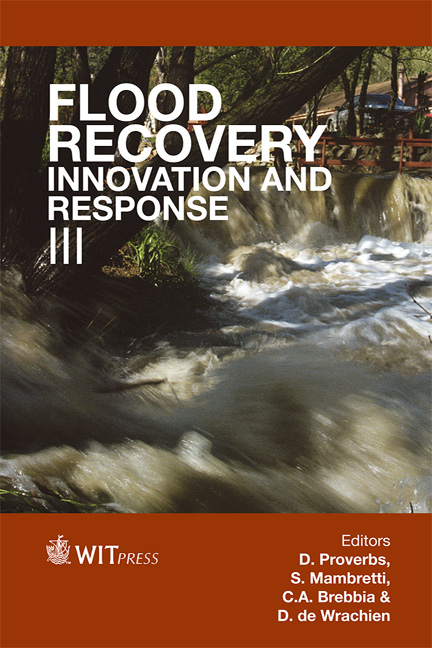Inflow Forecasting For Lakes Using Artificial Neural Networks
Price
Free (open access)
Transaction
Volume
159
Pages
9
Page Range
143 - 151
Published
2012
Size
544 kb
Paper DOI
10.2495/FRIAR120121
Copyright
WIT Press
Author(s)
R. K. Suryawanshi1, S. S. Gedam1 & R. N. Sankhua2
Abstract
Artificial lakes or reservoirs are constructed for storing the flood waters available during the rainfall period which can be subsequently used for meeting various water demands. These storage areas are also useful for mitigating the damage caused by floods and droughts. Generally, considering the geographical/topographical aspects, many of the artificial lakes are ideally located in the upper reaches of the catchments where the rainfall is comparatively high and the submergence is comparatively low. In such small catchments, severe storms result in very high inflows entering into the storage areas in a short duration. The conventional tools for inflow forecasting include the stochastic approach in which the results depend on the quantity and quality of the input data. To overcome such limitations, the use of present computing capabilities, Satellite Remote Sensing (SRS) data, Geographical Information System (GIS) as well as Artificial Neural Networks (ANN) tools for the development of a real time inflow forecasting model based on the observed rainfall pattern to advance the forecast time as well as to achieve better forecast accuracy would help immensely in planning the lake operations.This study includes the methodology developed for inflow forecasting using geospatial tools comprising spatial and temporal analysis of the storm events i.e. digital rainfall modeling, estimation of runoff depths using ANN and conversion of runoff depths into inflows. However, this paper discusses a digital rainfall model for isochrone areas of the catchment for spatial rainfall distribution and estimation of runoff depths using ANN. An application example for the Panshet reservoir in the Khadakwasla complex near Pune (India) is used for model calibration and presented. Keywords: digital rainfall, isochrones, ANN, GIS, SRS, inflow forecasting.
Keywords
digital rainfall, isochrones, ANN, GIS, SRS, inflow forecasting





